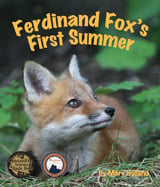Black Bear “Nest”
 If you look up occasionally when you are in a beech-maple forest, you may observe a sizeable cluster of twigs and branches fairly high up in an American beech tree. This “nest” of twigs is usually bigger than any squirrel’s nest and not cup-shaped like a hawk or owl’s nest. In fact, it isn’t a nest at all – it is a sign that a black bear has been sitting, usually in the crotch of the tree, pulling, biting and breaking off branches primarily in order to eat nuts (leaves, buds and catkins are also consumed). When the bear is finished eating what it desires, it discards the branch into a pile. Although known as a bear “nest,” this pile of branches is not a resting spot for bears. If you’re not convinced that a pile of twigs you find was made by a bear, and if it’s in a beech tree, try looking for claw marks on the smooth bark. If it’s a bear “nest,” you’ll most likely find some! (Discovery by Alfred Balch)
If you look up occasionally when you are in a beech-maple forest, you may observe a sizeable cluster of twigs and branches fairly high up in an American beech tree. This “nest” of twigs is usually bigger than any squirrel’s nest and not cup-shaped like a hawk or owl’s nest. In fact, it isn’t a nest at all – it is a sign that a black bear has been sitting, usually in the crotch of the tree, pulling, biting and breaking off branches primarily in order to eat nuts (leaves, buds and catkins are also consumed). When the bear is finished eating what it desires, it discards the branch into a pile. Although known as a bear “nest,” this pile of branches is not a resting spot for bears. If you’re not convinced that a pile of twigs you find was made by a bear, and if it’s in a beech tree, try looking for claw marks on the smooth bark. If it’s a bear “nest,” you’ll most likely find some! (Discovery by Alfred Balch)


















Sometimes confused with ice storm damage, but ice storms generally leave the branches hanging down, while bears will pull the branches in towards the center of the tree (and usually there won’t be leaves on the branches if it was caused by an ice storm).
We’ve seen these occasionally in oak and black cherry as well, tho it’s harder to find claw marks on the bark of oak or cherry.
February 8, 2013 at 2:15 pm
Thanks so much for your added information, Al. Much appreciated.
February 8, 2013 at 3:49 pm
Al Stoops and I found multiple bear nests in beech trees in Nelson, NH, a month or so ago, so many that I felt as if I were following the trail of the bear from tree to tree. It is hard to find the claw marks in oak, but not impossible. We were pleased to find very faint claw marks in an oak in which we had discovered a bear nest.
February 8, 2013 at 4:34 pm
All wonderful and unusual information! Thank you!
February 8, 2013 at 8:57 pm
Hi Mary, I saw my first “bear nests” yesterday snowmobiling to Barnard and goundvyour blog post on the topic. What fun!
March 4, 2019 at 7:27 am